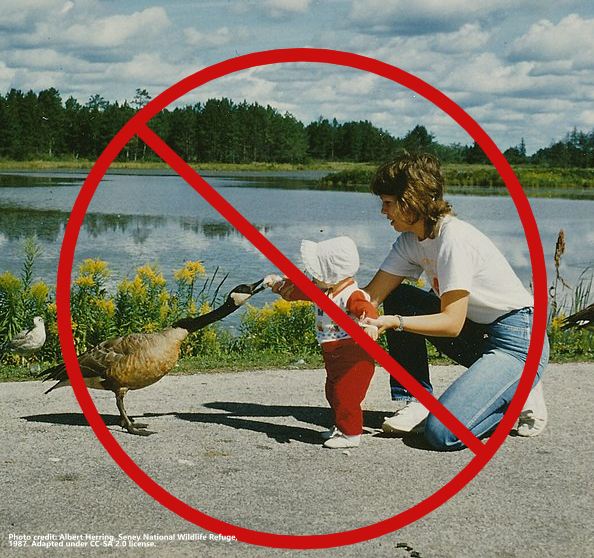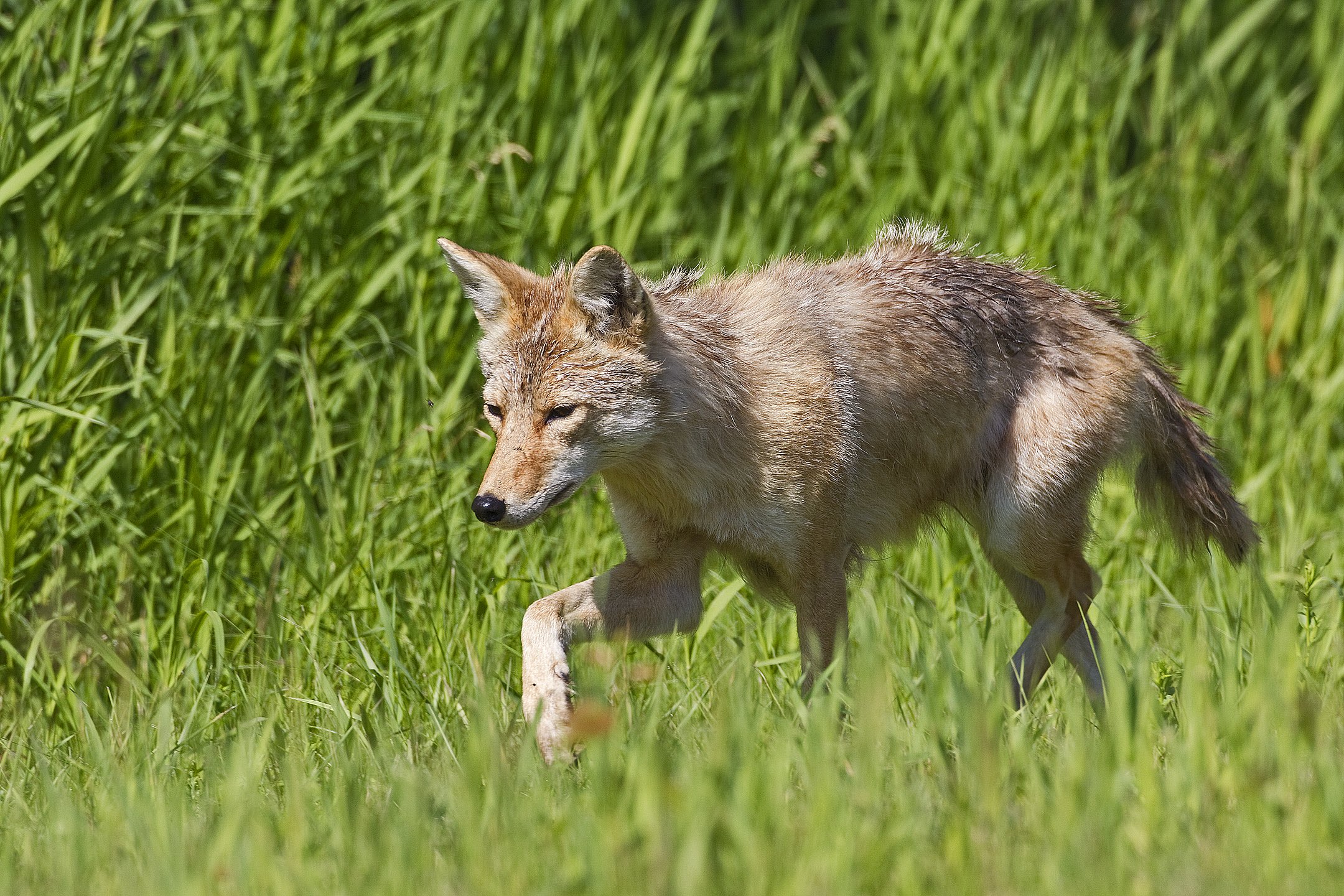Seeing a wild animal in its natural environment is a thrilling experience. But when you encounter one unexpectedly while hiking or camping it can be frightening and even dangerous.
There are things you can learn to do if you meet up with a large animal like a bison, bear, cougar or coyote on the trail, but let’s start with some tips on how to make any interactions you have with wildlife safe for both you and the animals.
First, some familiar advice – Do not feed the animals - even the small, cute ones. Human food is hard for an animal to digest and offers poor nutrition. It teaches animals to associate people with food. Begging by a roadside puts them in danger of being injured or killed by a vehicle. Eating garbage can bring animals into conflict with people, sometimes resulting in human injury and/or wildlife being destroyed. Dispose of waste in bear-proof bins if you can and never leave food out. Even the scent of an empty cooler can attract wild animals.
Don’t try to pet the animals – a fawn or a baby moose has a mama nearby who will attack to protect her young. Avoid touching any animals you see, even that cute little chipmunk that pops up on your picnic table. It’s not safe for you or for them and can expose you to bites and diseases like hantavirus and rabies. Don’t approach wildlife even if you think you are far enough away. You are in their territory and you are invading their space. Stay at least 3 bus lengths (30 metres/100 feet) away from large animals and 3 times that distance (100 metres/325 feet) from bears. Think you’re safe enough? A bison may look ungainly but it can run 3 times faster than a human.
Photo credit: Veronika Ronkos
Perhaps you’re just looking for a great photo. Again, don’t disturb an animal by calling to get its attention. Photograph wildlife from a car or observation post, and do not get out of your car in order to try and get closer to the animal. Don’t surround, crowd or follow an animal. Never put people, especially children, at risk by posing them with wildlife. Don’t turn your back on an animal so you can take a selfie with it.
There are some specific things to keep in mind when you are hiking and camping.
Hike and camp with other people, if possible, and don’t wander off the trail, especially after dark.
Don’t surprise a mother who’s with her babies.
Photo credit: Dorothy Monteith
Make a noise. It’ll let animals know you’re nearby so you don’t startle them. Talk, sing, whistle, and make human noises. Bear bells are often sold by outdoor equipment retailers, however, the current wisdom is that bear bells do not effectively warn bears that there’s a human in the area. Talking, singing, or shouting are far more effective – and it makes for a bit of fun with your hiking buddies!
Learn about the animals that live in the area. Watch for animal tracks and poop. They can let you know what might be around.
Carry bear spray if you’re in an area known to have bears.
Check for bear and cougar advisories in the area. Obey instructions given by park staff. Tell a park ranger if you have an encounter with a wild animal or have a close call or sighting.
Do everything you can to avoid conflict with wild animals. If you do come across a potentially dangerous wild animal while hiking or camping, stop, remain calm and access the situation. Further response will depend on the type of animal you are encountering and what their behaviour is telling you.
Click here for more information about wolf, bear, cougar, moose/elk or coyote encounters, and find Alberta’s BearSmart Guide here.
Living with urban wildlife
You may be prepared for the possibility of seeing wild animals in the mountains, but what about in your backyard, or walking around your neighbourhood?
As cities and towns grow, they often expand into what was natural wildlife habitat. Many wild animals make great neighbours for humans. They eat pests, like mice and insects and contribute to the biodiversity of our green spaces. But you still have to take precautions around wildlife, even in urban settings.
Keep your dog on a leash. An animal being barked at or chased by a dog might dart into traffic or try to defend itself by attacking your pet.
Keep your cats indoors. Cats are easy prey for coyotes and foxes, and keeping your cats inside will ensure the safety of the local bird population. It is estimated that domestic cats (both feral and domestic) kill between 100 and 350 million songbirds each year – contributing to a global decline in songbird populations.
Remove food and shelter that attracts wildlife to your property. Keep your garbage in a secure container with a lid. Keep your yard clean of pet foods, bird seed, fallen fruit and berries that can serve as a food source for wildlife. Potential shelter, such as the spaces under decks, patios and outbuildings, should be closed off with durable wire mesh.
Drive carefully. Slowing down when driving near parks, river valleys, golf courses and other green spaces lessens the likelihood of collisions with wildlife.
Learn about wildlife in the city. Children should be taught to make safe decisions and respect wildlife by never feeding or approaching wildlife, putting garbage into garbage cans, not running away when they see coyotes or foxes, and keeping their pets leashed and supervised.
Photo credit: Gerald Romanchuk
Click here for more information about urban coyotes.
Whether in the wilderness or close to home, the site sight of a wild animal lifts us out of the everyday and reminds us that we are all part of nature. By treating all wild creatures with respect and care, we help to ensure that it remains a safe and nurturing world for all.
Guest blog by Louise Dorner




